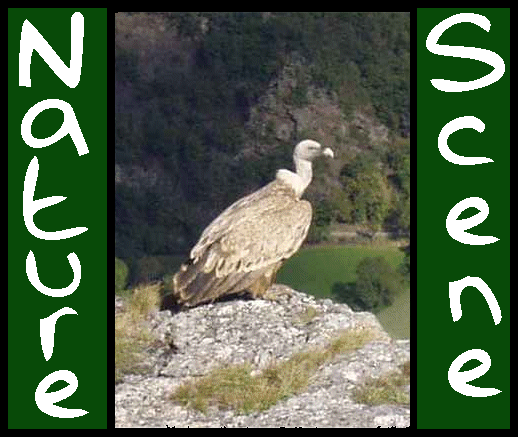
Welcome to NATURESCENE'S
BOTANY ARTICLES of the CÉVENNES
A selection of articles in French and English by David Dickenson of Naturescene, written for the official ALEPE site

|
As the central mountainous plateau of France drops down to the Rhone valley, the Cévennes are born.
For an English botanist, the flowers of this region are pure magic.
All you need to discover these flowers is a pair of legs and at least one eye.
In addition, of course, it is always more agreeable to supplement this with a two-legged and a four-legged companion.
I would like to introduce you to a close friend, the 'Chemin des Vignes' ('Vinyard Lane') of our little village of La Salle Prunet, which lies 2 km from Florac, in the department of Lozère. This friend expresses all the contrasts of this fascinating region, and we get together each morning before breakfast. |
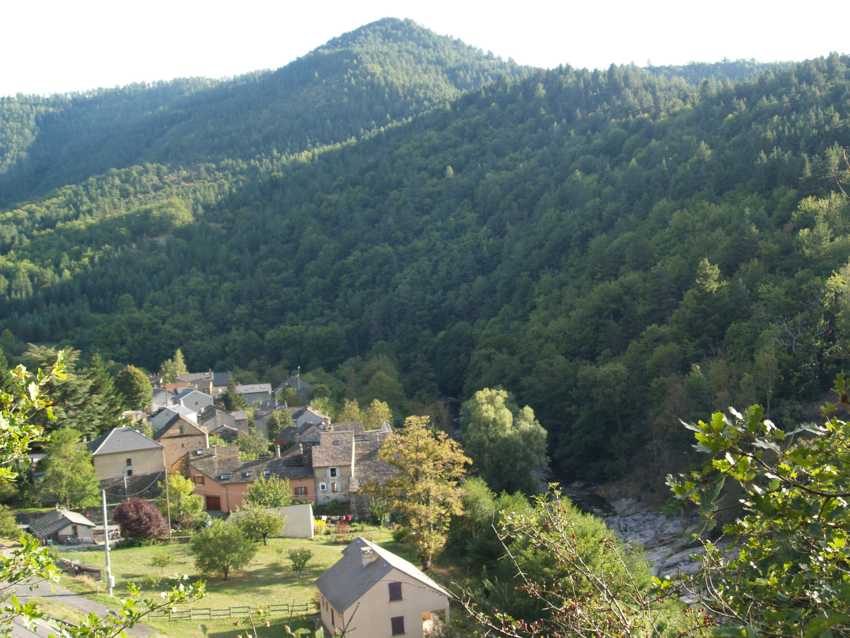 |
| This 'chemin', or lane, formerly constructed to give access to the 'bancels' (terraces) of orchards and vineyards,
gently climbs the hillside for about 500 metres. Bordered by dry-stone walls and shrub-strewn rocks, this path lays
between the Mediterranean climate and the Atlantic/Continental climate.
The rocks themselves are schist, but the water that runs over them is alkaline, coming from a limestone cap 200m above the acidic schist. There is a contrast of some very shady spots, but also many patches of bright sunshine. Apart from myself, there is not normally a soul around, but 60 years ago, it was buzzing with people tending the bancels, and as recently as 2002, a small flock of sheep passed by every day, cropping the vegetation as they went. Nowadays, it is the council workman who crops the vegetation, without needing to use his teeth. |
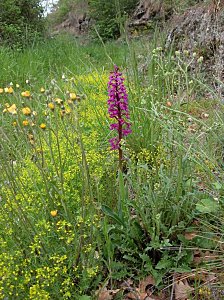
Photo 1 |
These many contrasts ensure this track is a little bit special, and I have identified and photographed
more than 230 species of plant here, out of the thousand or so photographed by me overall in the Cévennes.
Straddling these two climates, two soil-types, and two time-periods, some rather special plants can be seen.
At the moment, for example, I can admire a perfumed carpet of Pyrennean Yellowcress (Rorippa stylosa) (photos 1 & 2), which was to be found exlusively at this spot 10 years ago, but is becoming more and more common in the locality. |
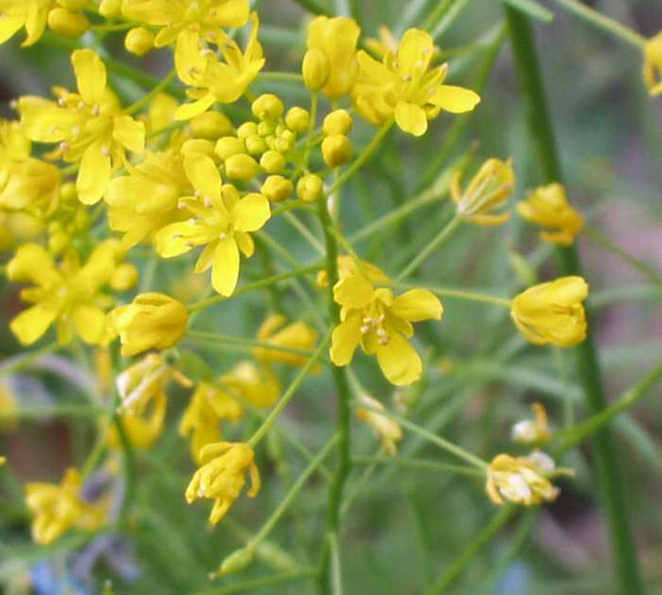
Photo 2 |
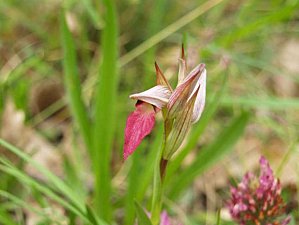
Photo 3 |
There is also a growing colony of Long-lipped Serapias (Serapias lingua) (photo 3), an orchid which is very rare on the Atlantic side of the weather divide. |
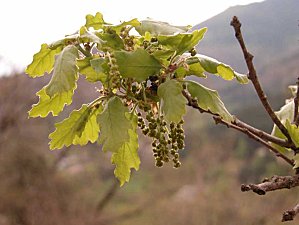
Photo 4 |
The Sessile Oak (Quercus petraea) (photo 4) is abundant, but the occasional Holm Oak (Quercus ilex ) (photo 5), which marks the line between the Mediterranean and Atlantic/Continental climates, finds it pretty difficult to flower, awaiting a touch more global warming. |
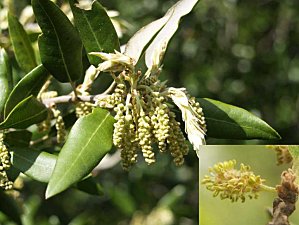
Photo 5 |
|
For those living in England, many species of flowers have disappeared for ever, because of the 'enriched' fields, lanes covered in tarmac, and housing estates encrusting the landscape. Value them whilst you can. |